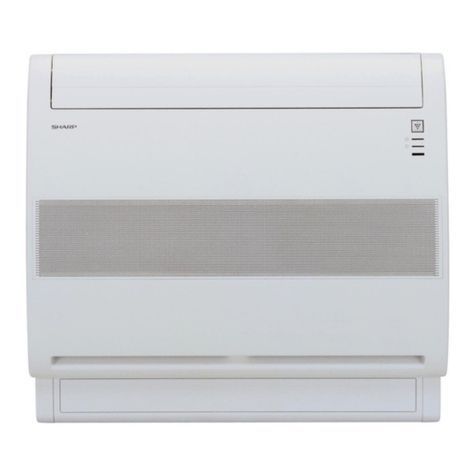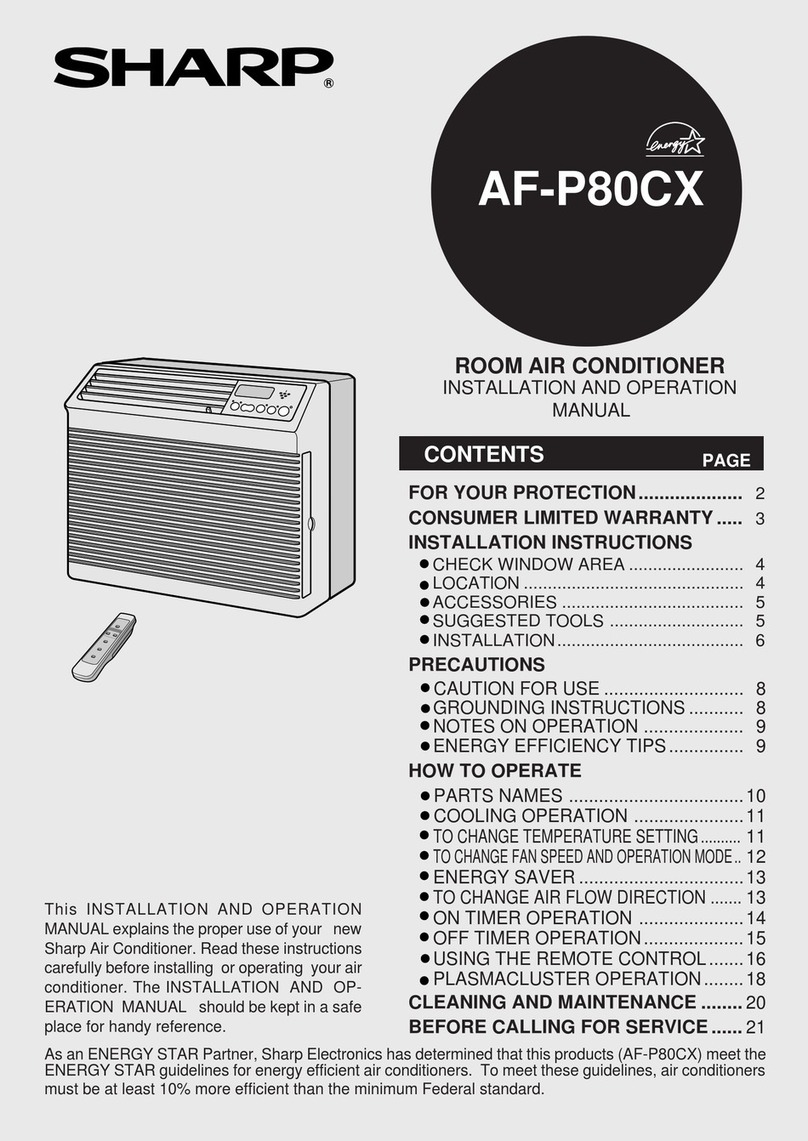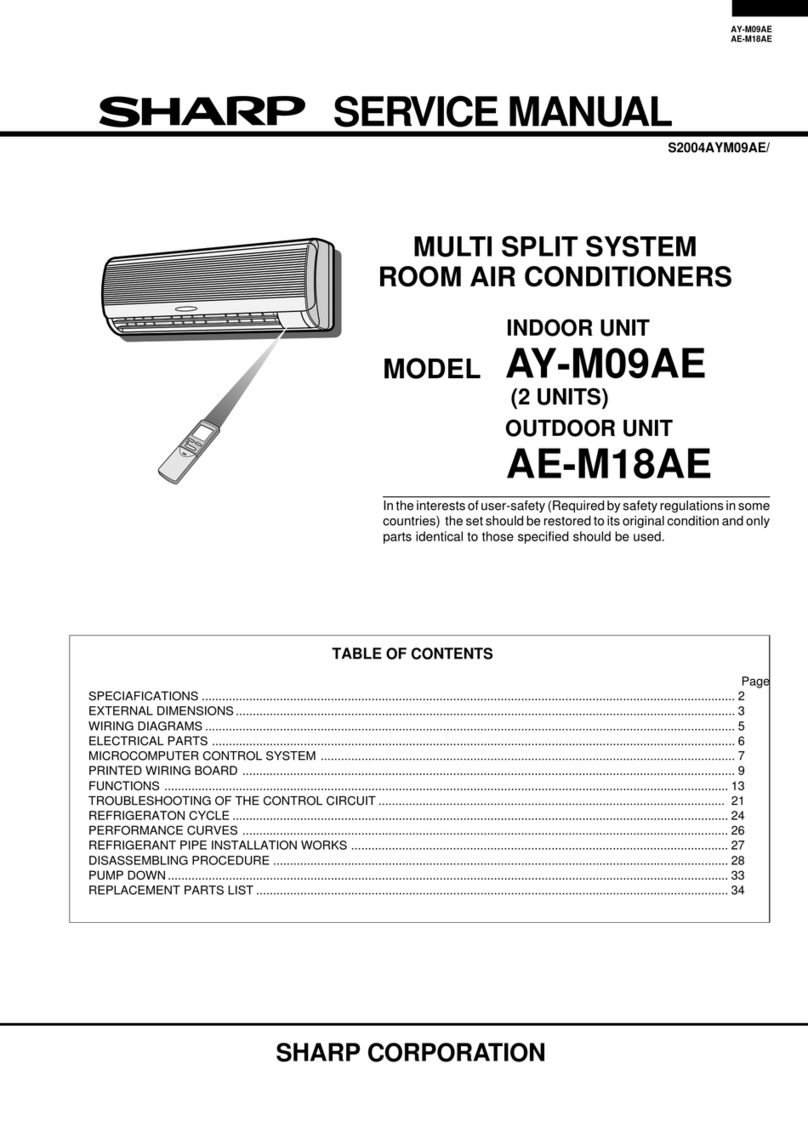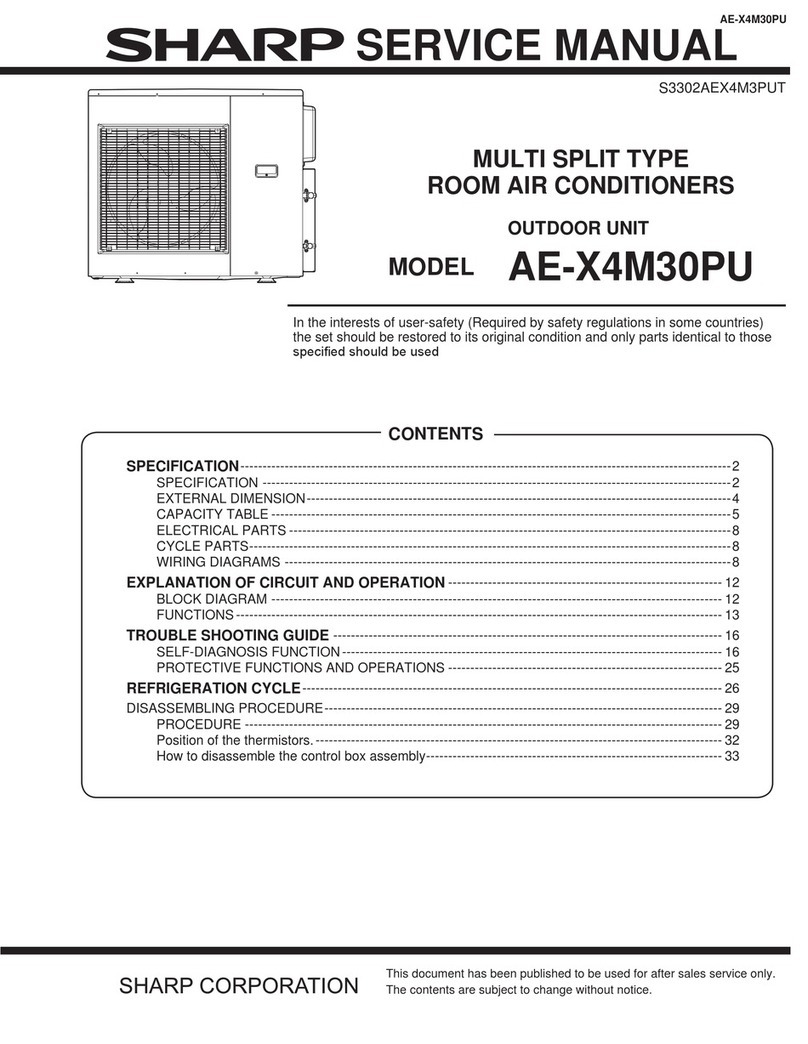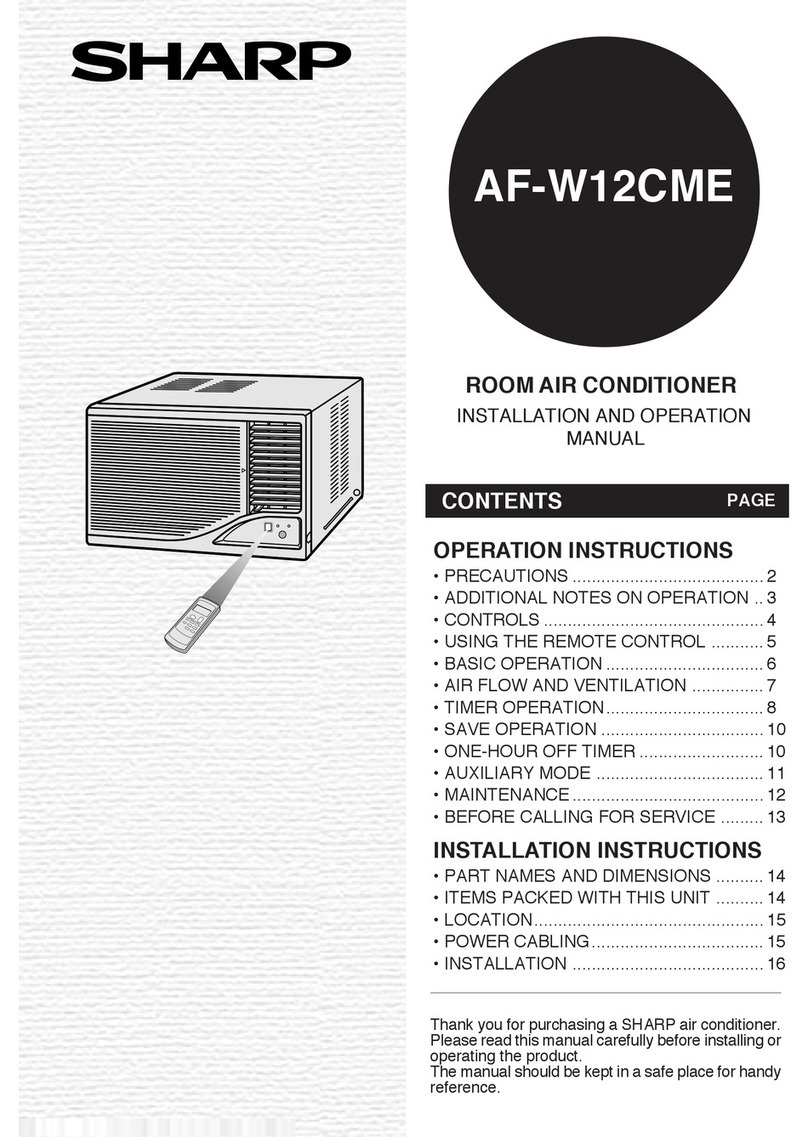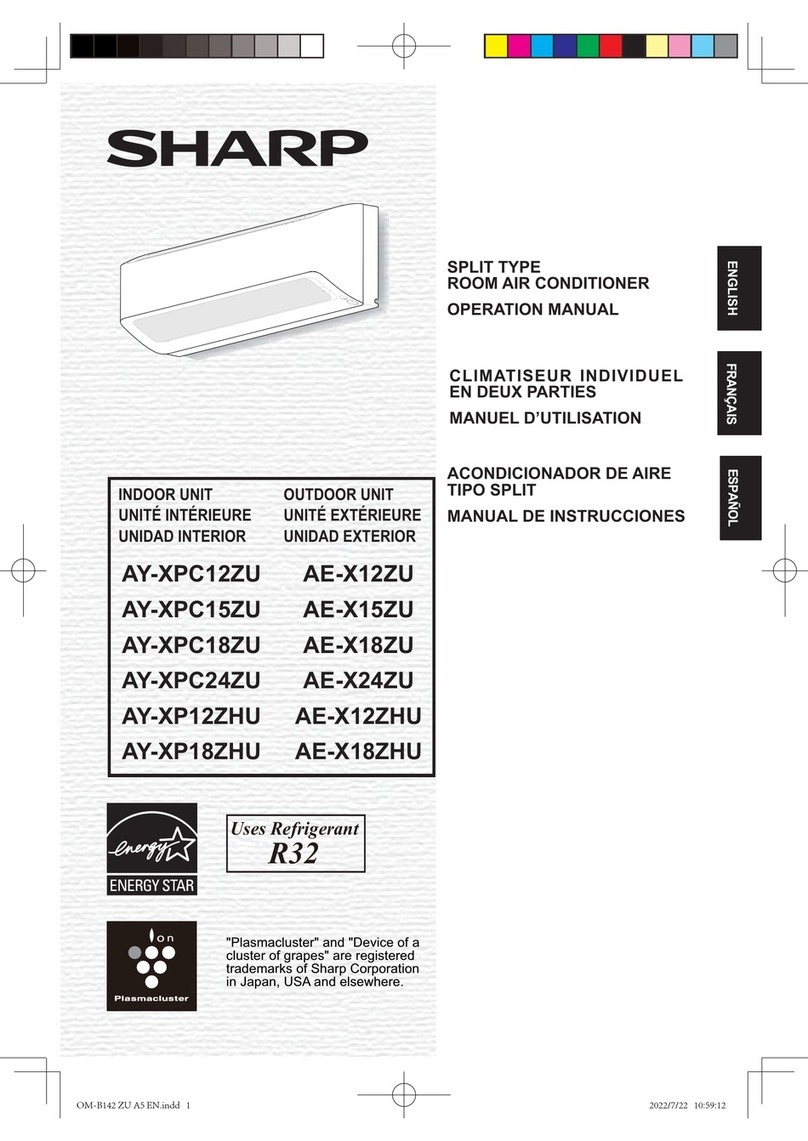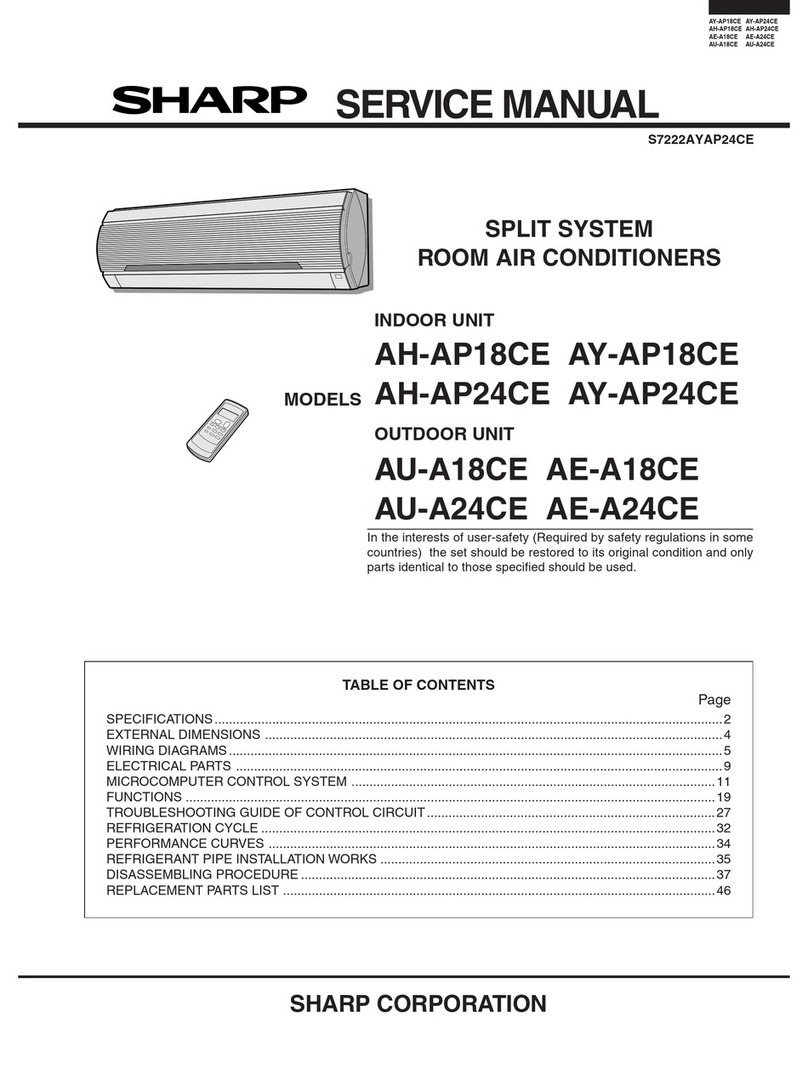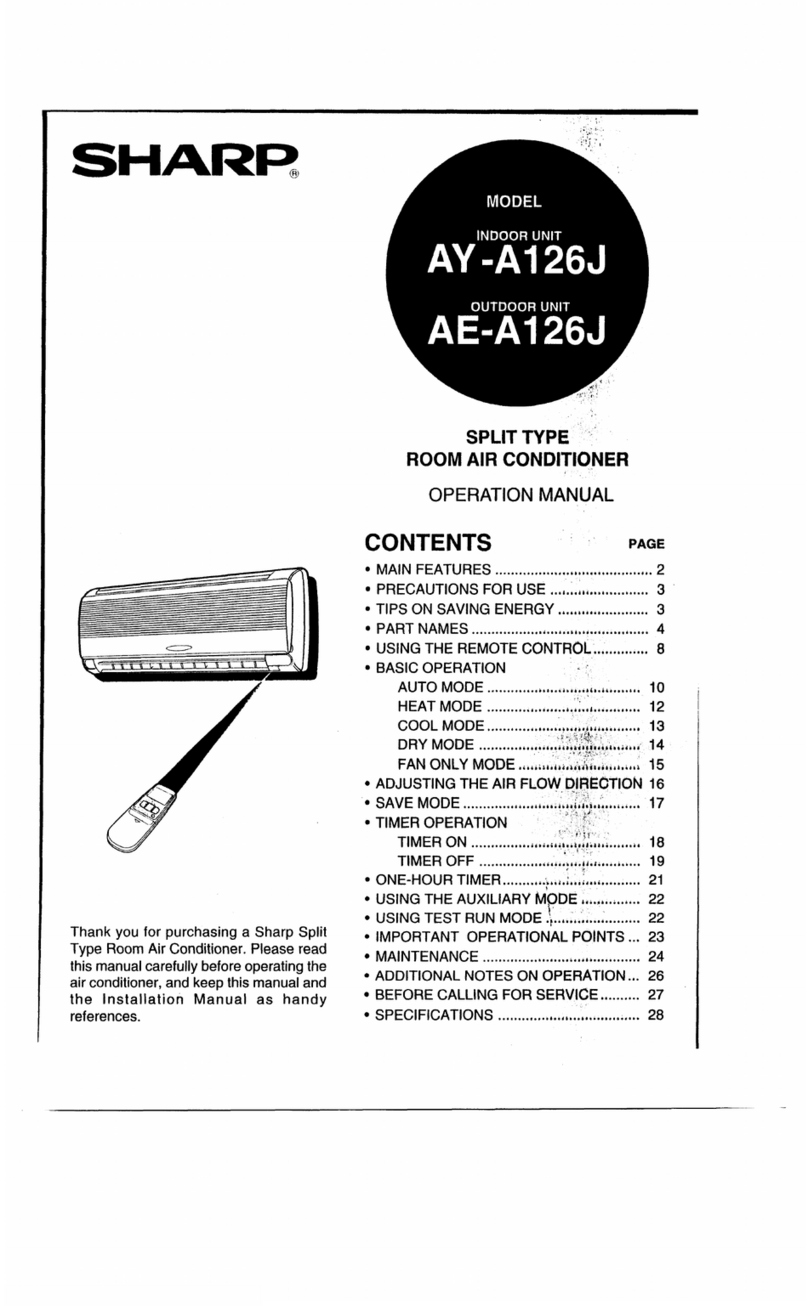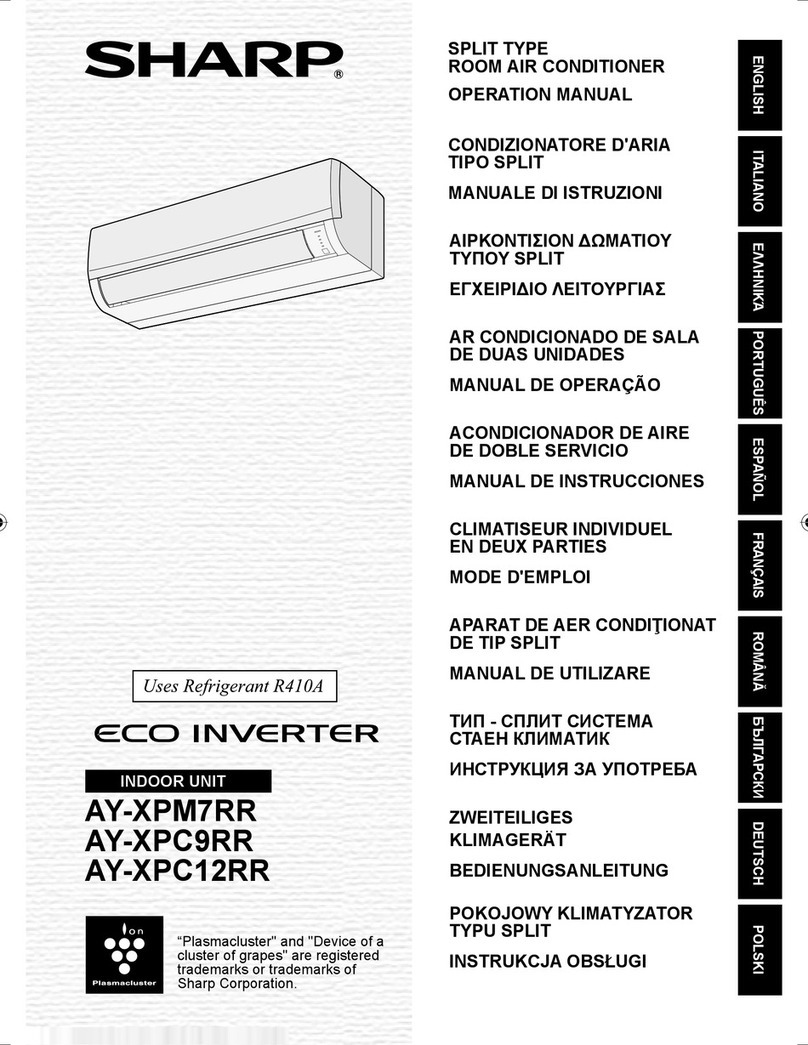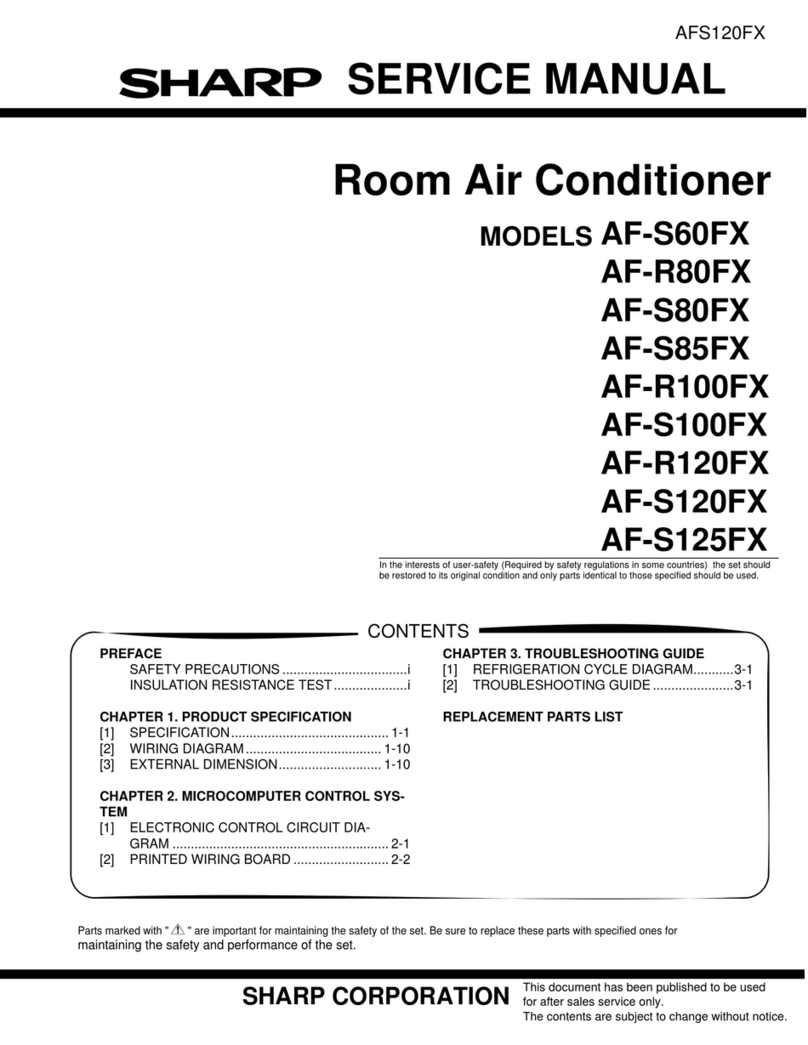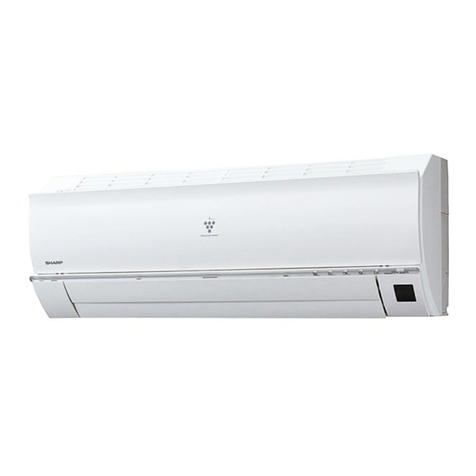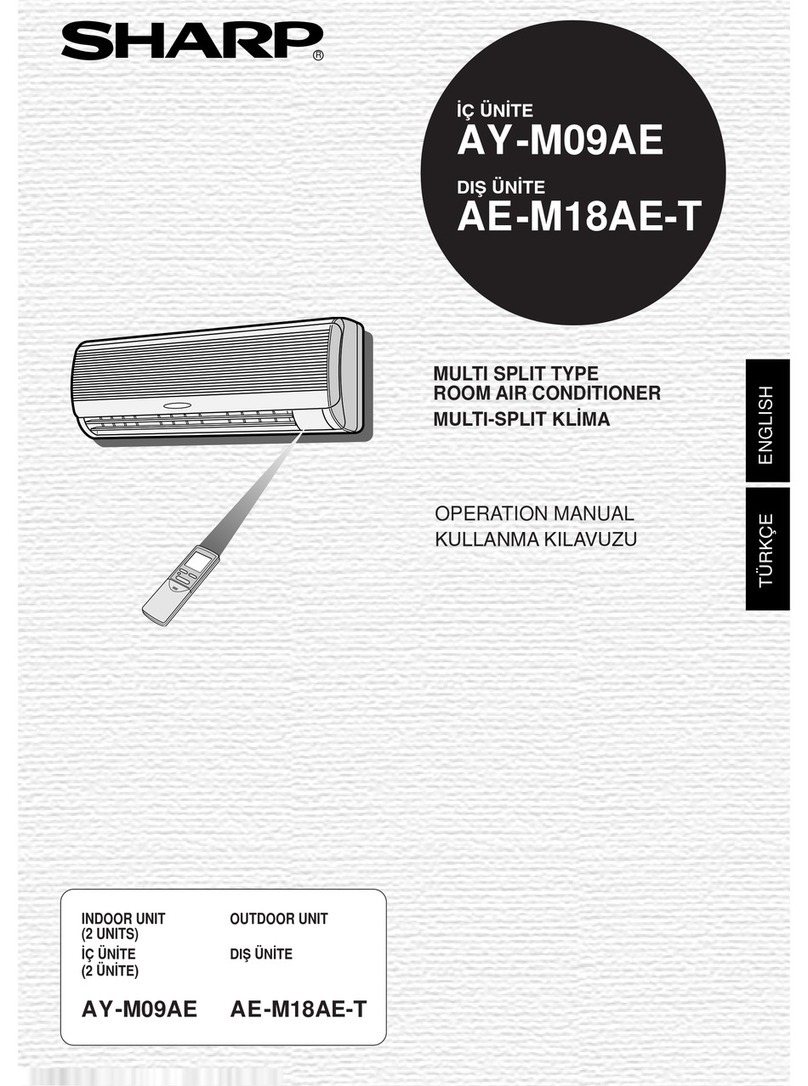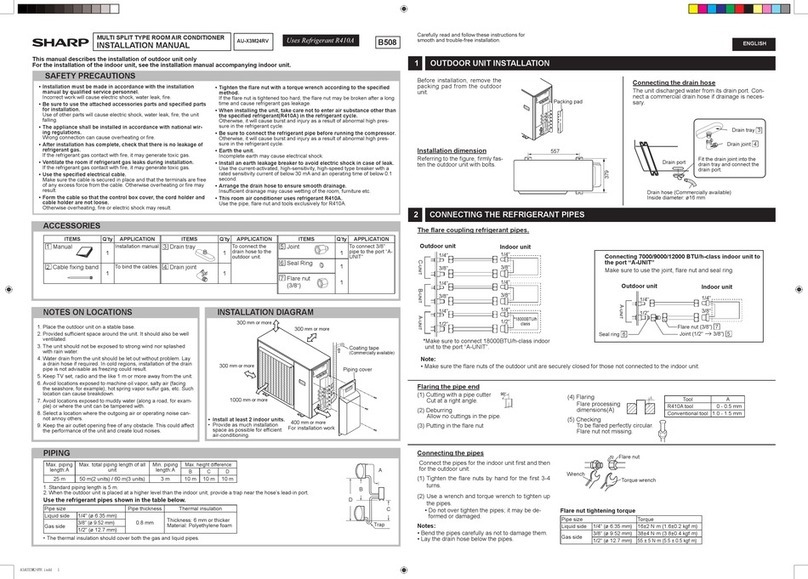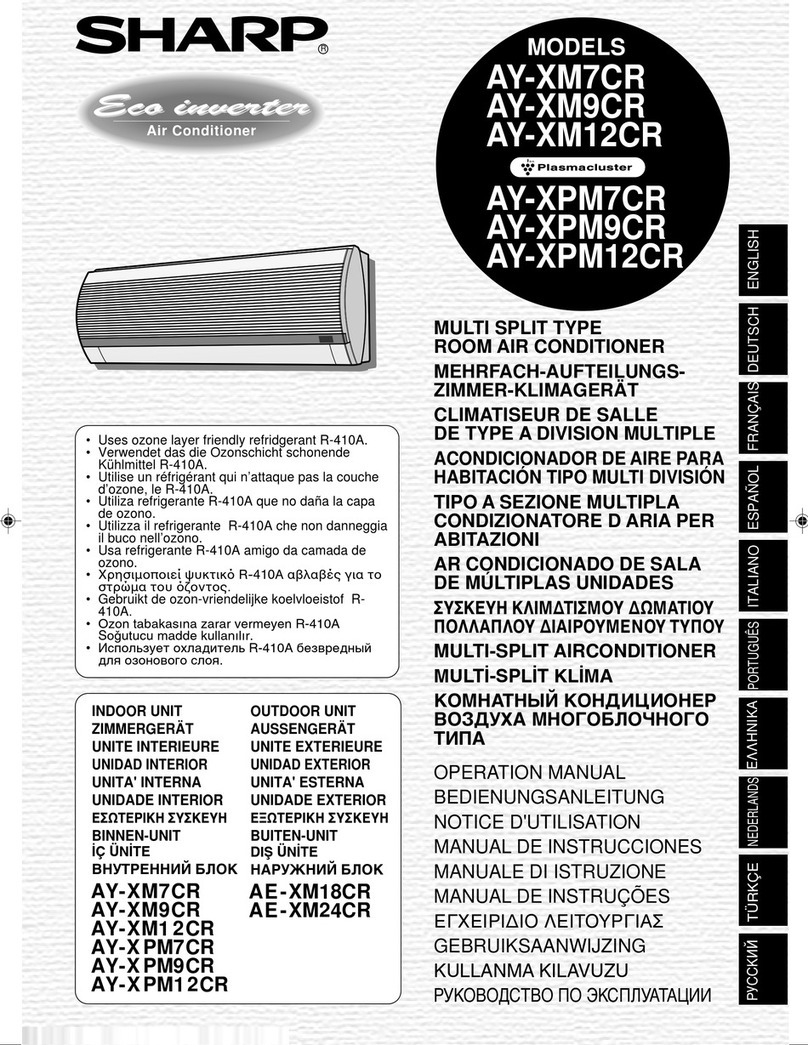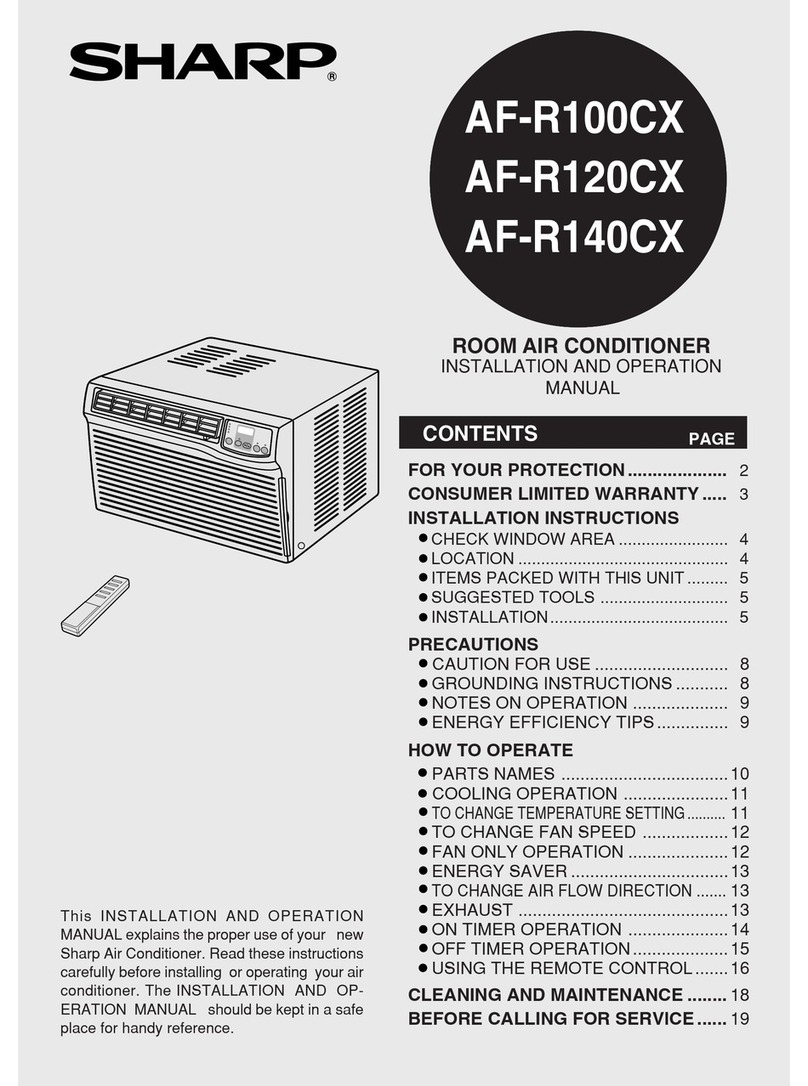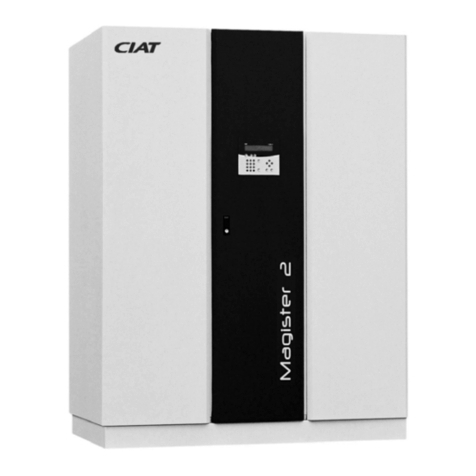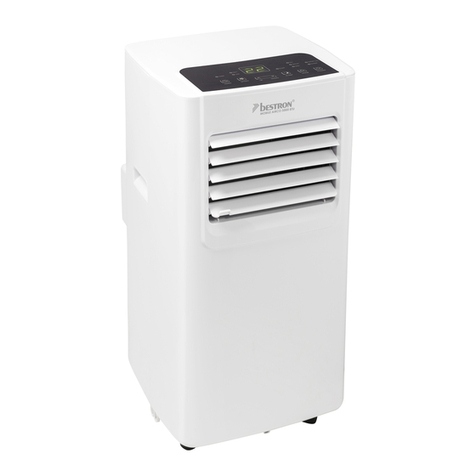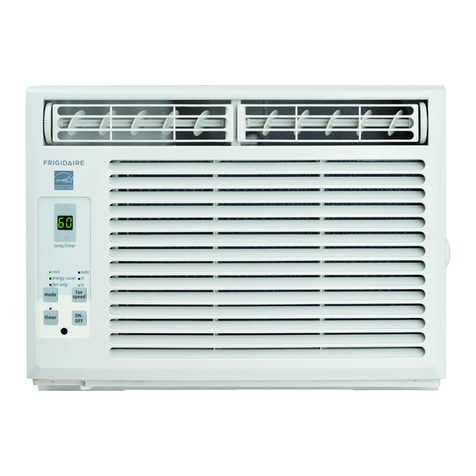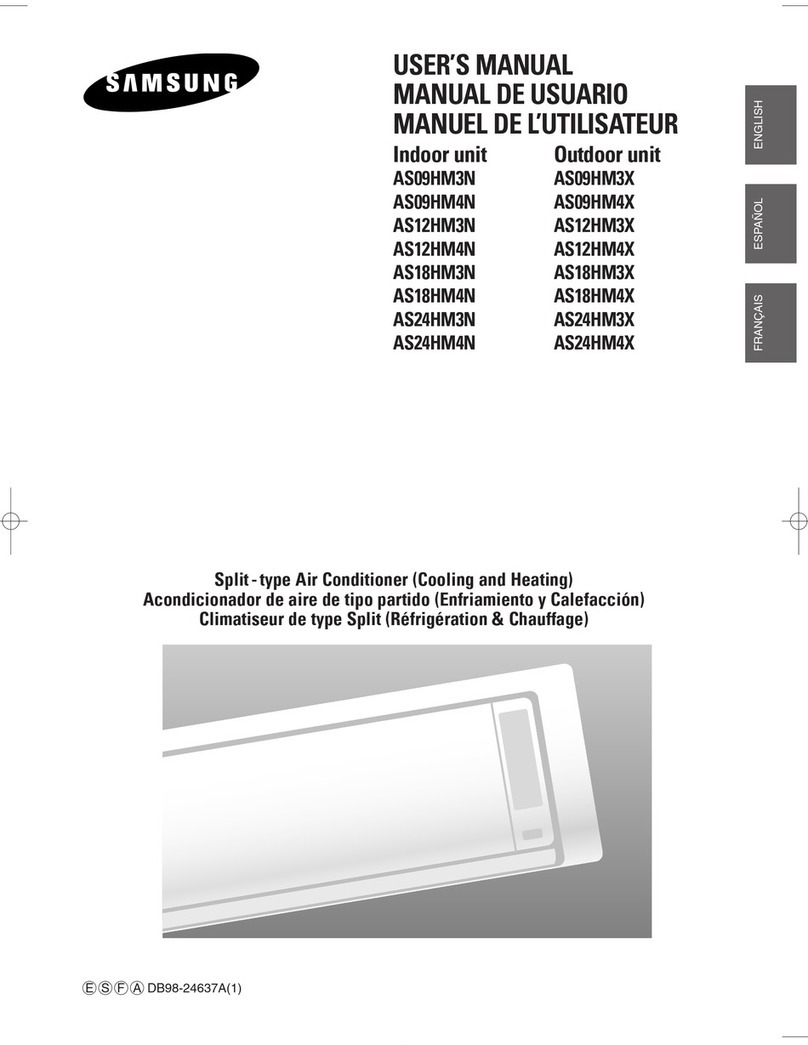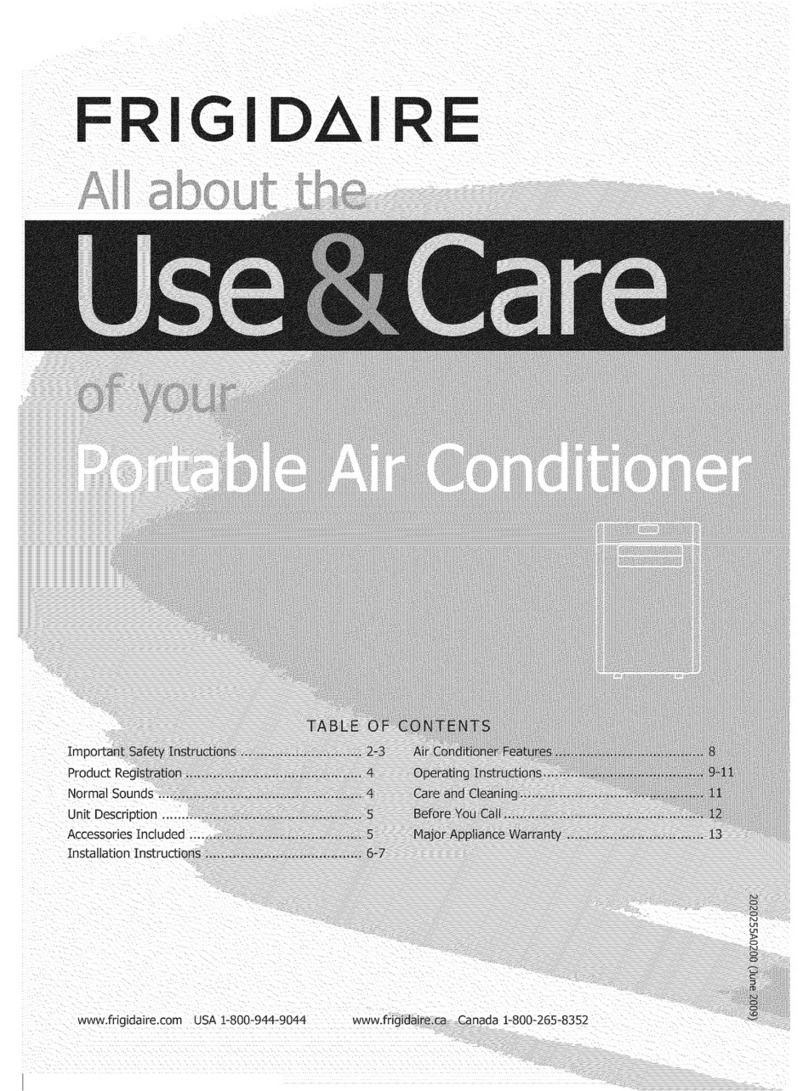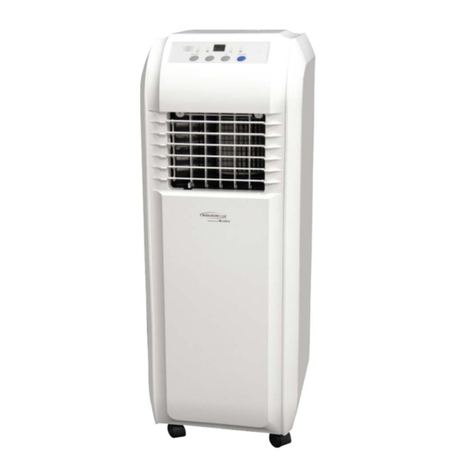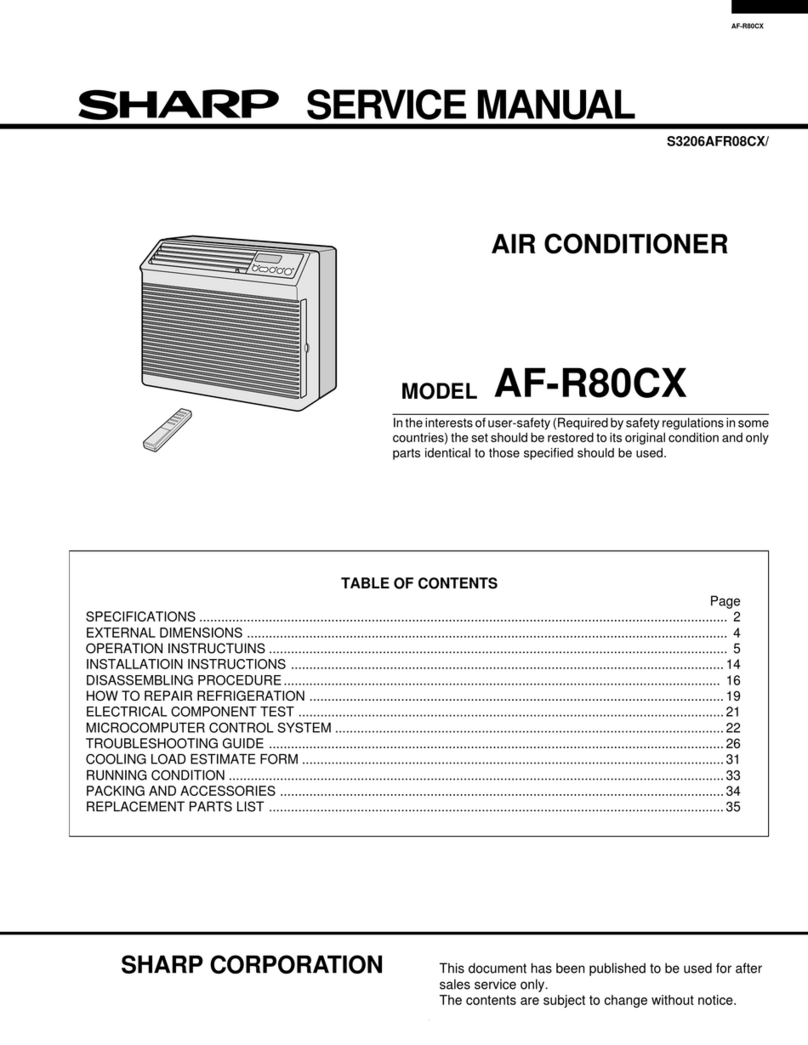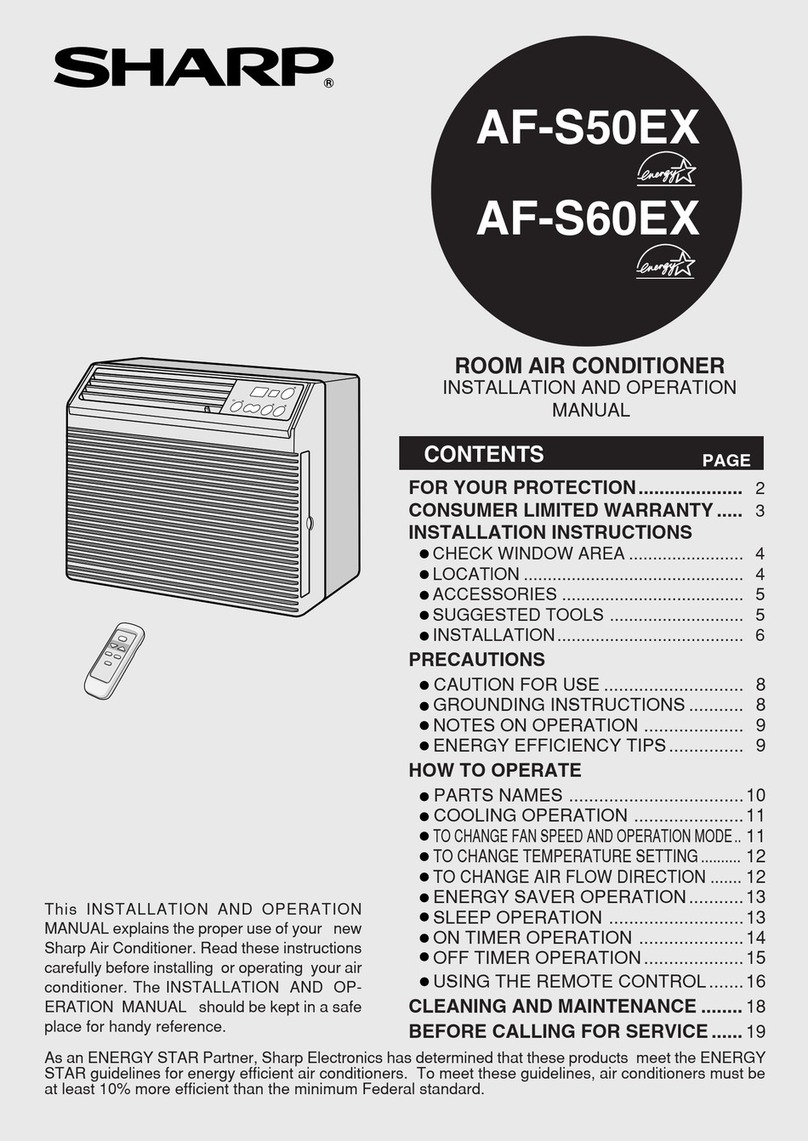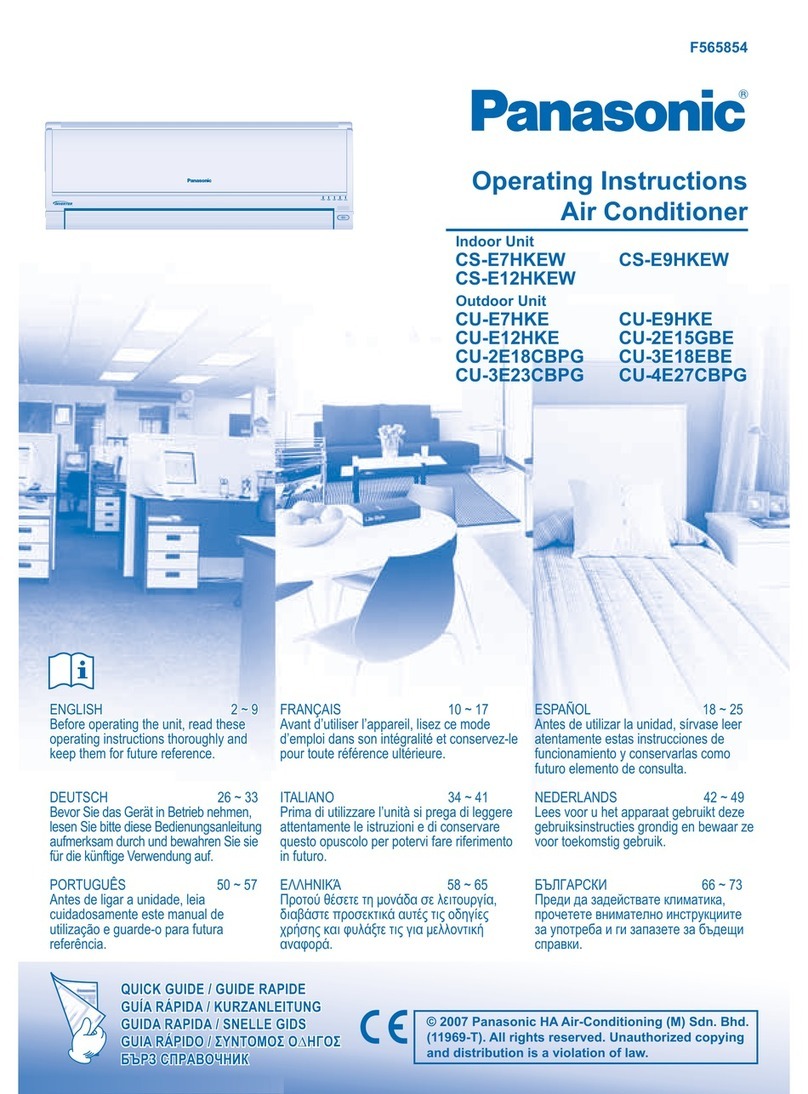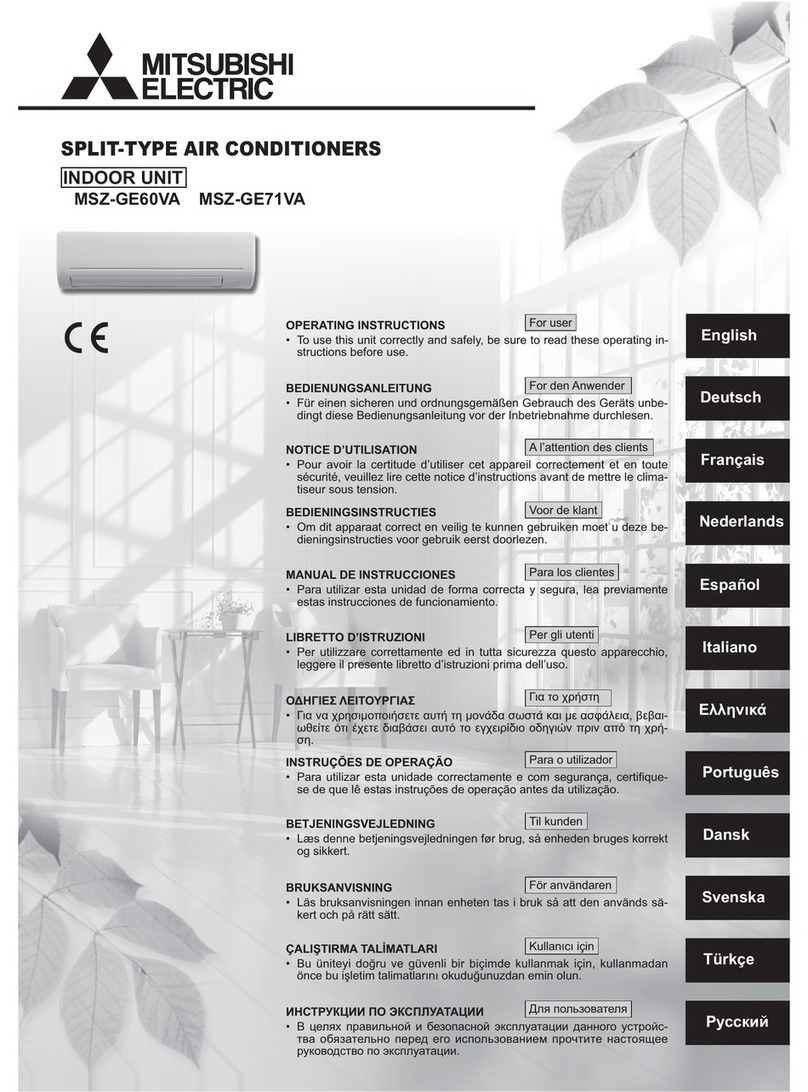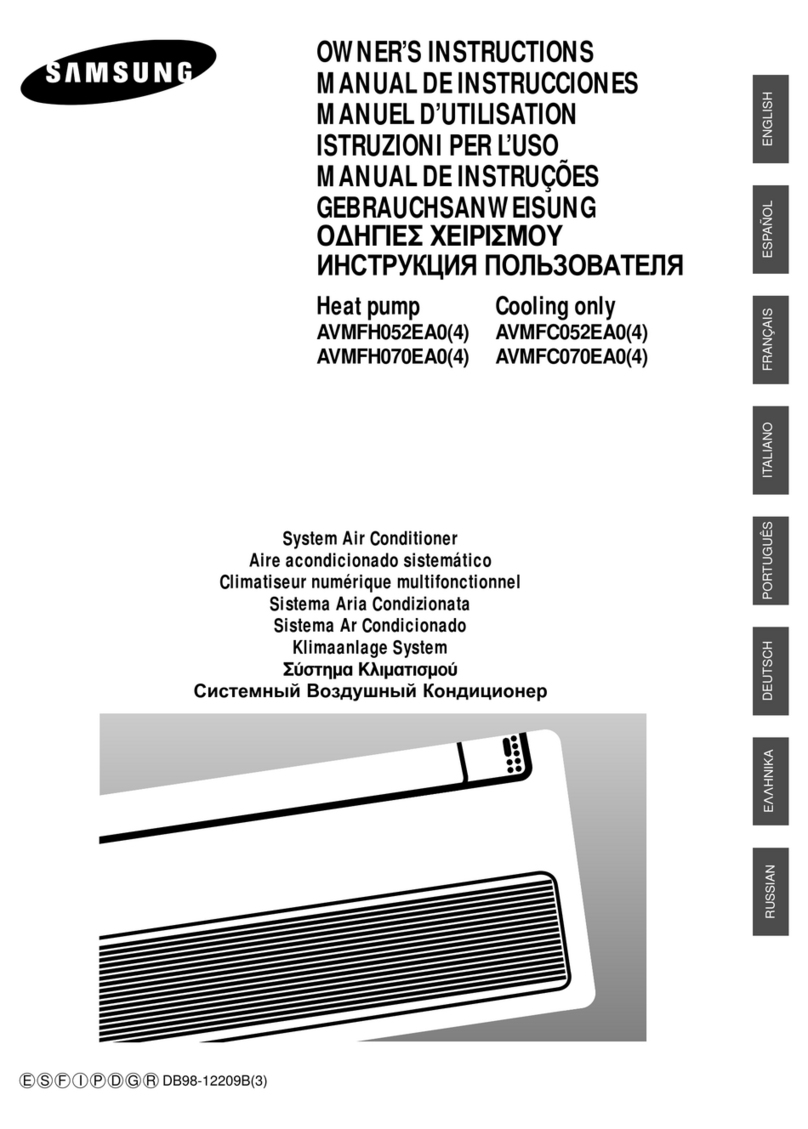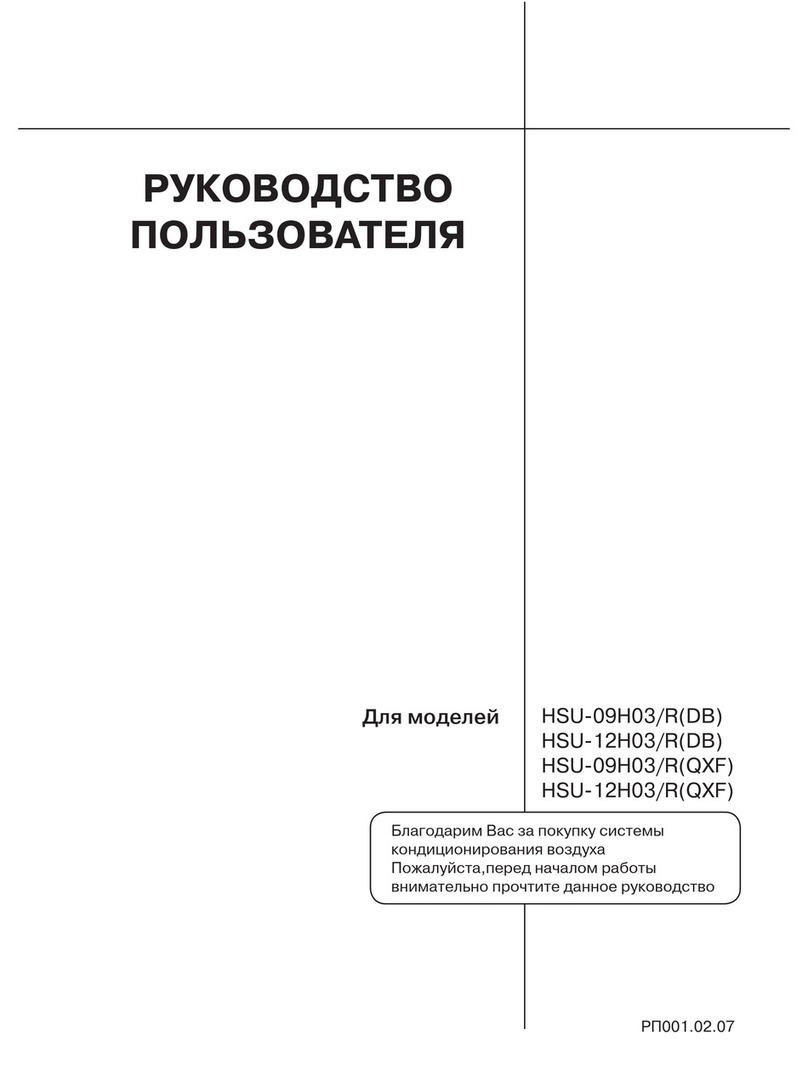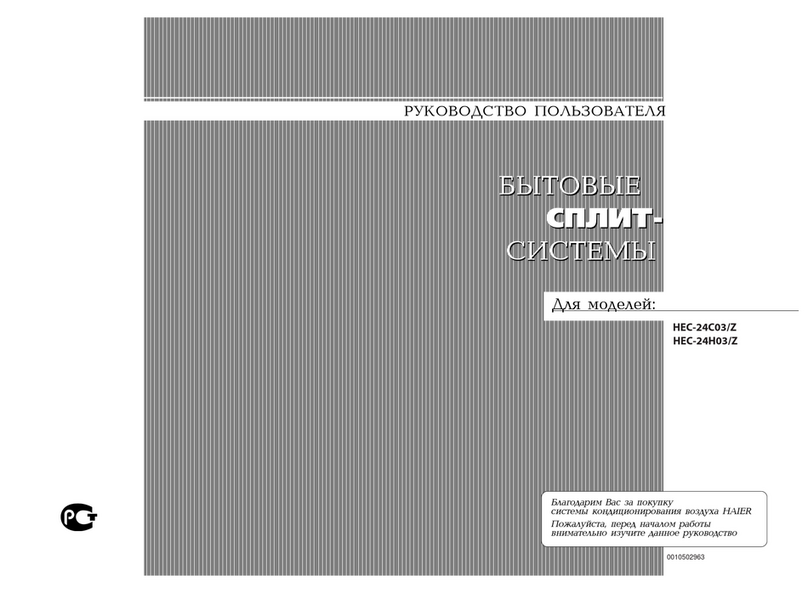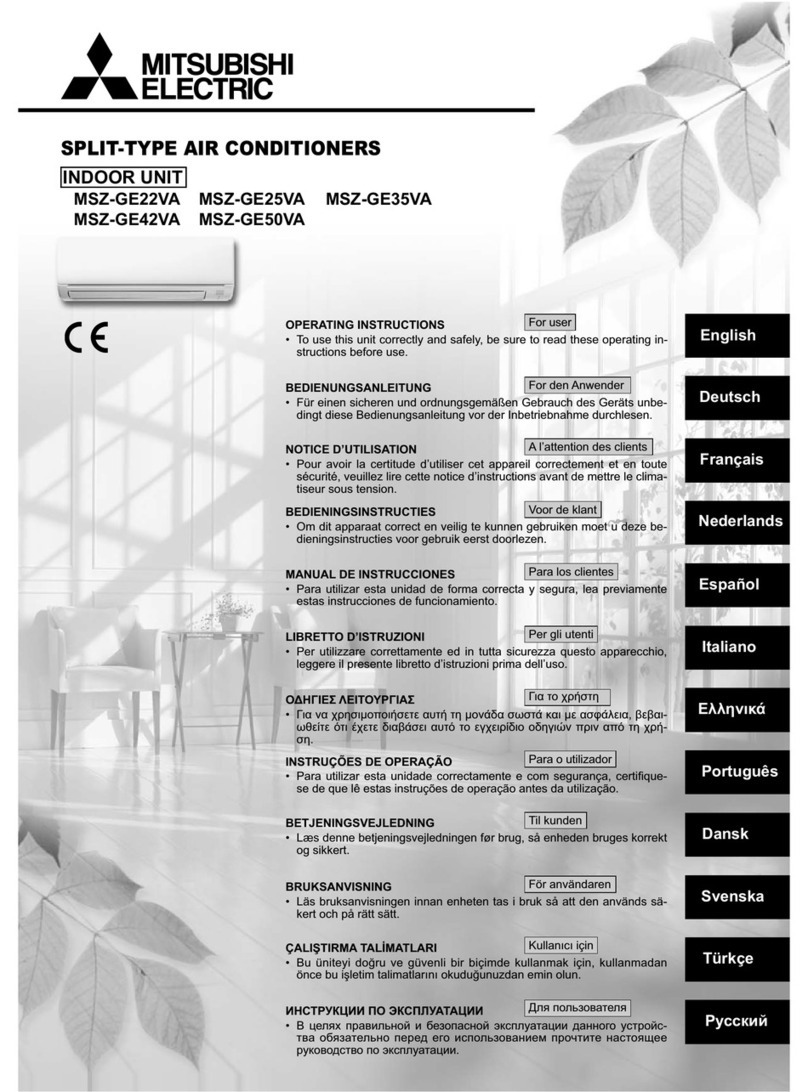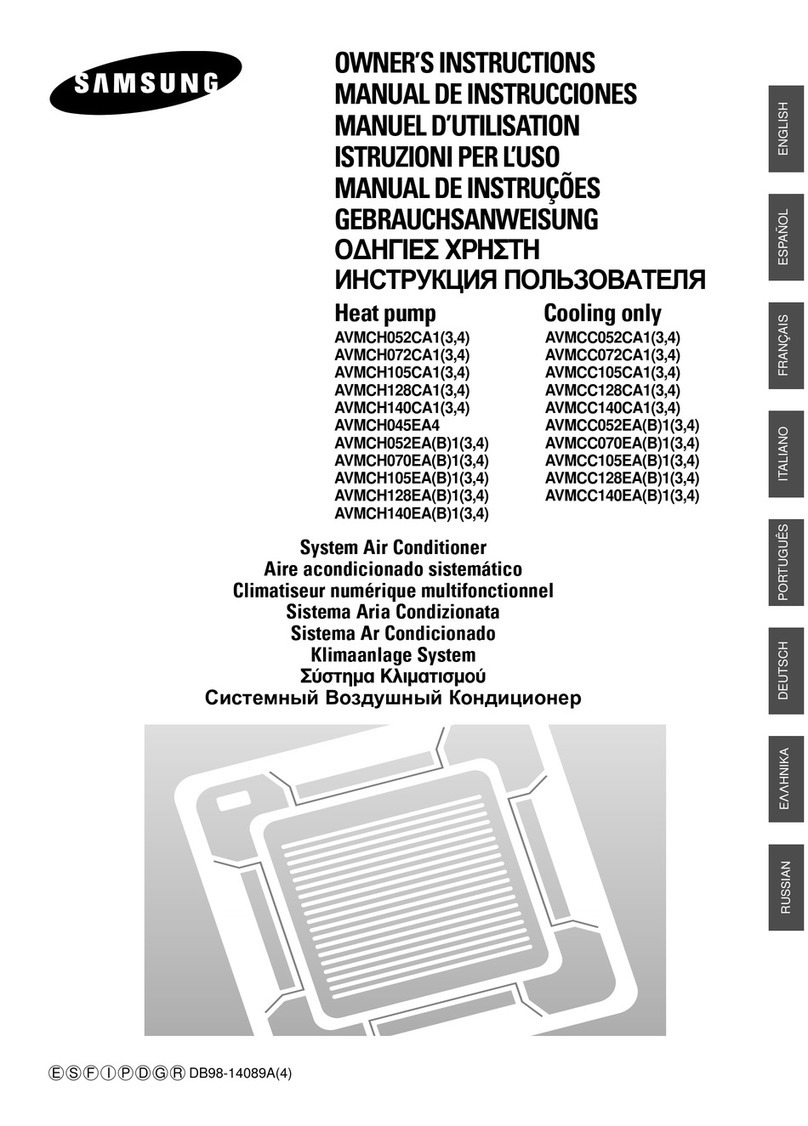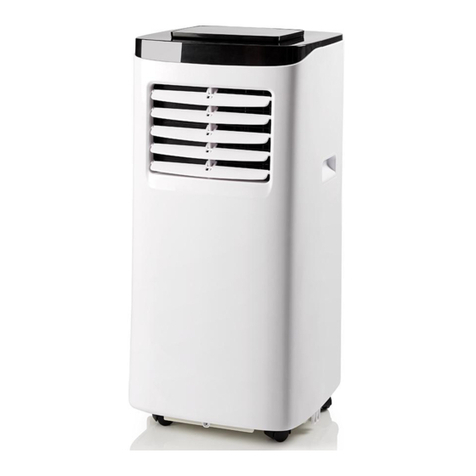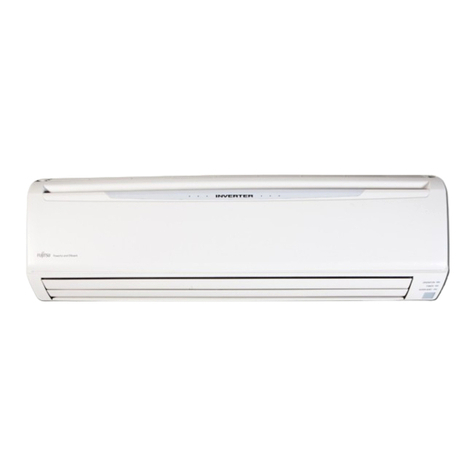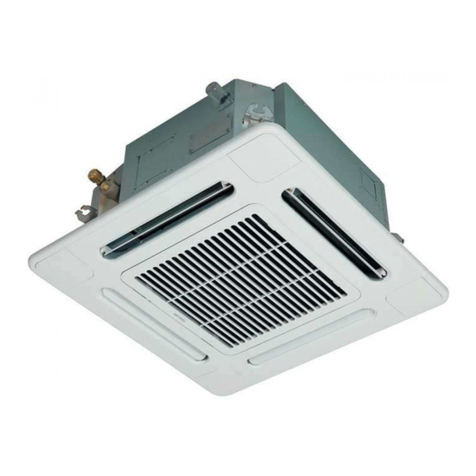AEX3M18JR
2 – 2
[2] FUNCTIONS
1. FREQUENCY CONTROL
1) AC current peak control
2) Prevention control of outdoor heat exchanger overheating
If the temperature of the outdoor heat exchanger exceeds the over-
heating prevention line 1 or 2 during cooling, the operating fre-
quency is lowered by approximately 5 to 15Hz. After that, the
frequency is lowered approximately 5Hz once every 60 seconds or
approximately 15Hz once every 120 seconds. When the tempera-
ture of the outdoor heat exchanger goes below the overheating
prevention clear line, the frequency is raised by approximately 5Hz
once every 60 seconds, and normal operation is restored. If the fre-
quency is lowered to minimum frequency without the temperature
of the outdoor heat exchanger decreasing and this condition lasts
for 1 minute, the compressor will be stopped.
3) Prevention control of compressor overheating
If the temperature of the compressor exceeds approximately 108
°C, the operating frequency is lowered approximately 5Hz. After
that, the frequency is lowered approximately 5Hz once every 60
seconds. When the compressor temperature drops below approxi-
mately 108°C, the frequency is raised approximately 5Hz once
every 60 seconds, and normal operation is restored. If the fre-
quency is lowered to minimum frequency without the temperature
of the compressor decreasing, and this condition lasts for 1 minute,
the compressor will be stopped.
4) Prevention control of indoor heat exchanger overheating
Two minutes after room several decrease If the temperature of any
of indoor heat exchangers exceeds the overheating prevention line
1 or 2 during heating, the operating frequency is lowered to mini-
mum frequency. When the temperature of all of indoor heat
exchangers go below the overheating prevention line 1, the fre-
quency is raised by approximately 5Hz once every 60 seconds,
and normal operation is restored. If the condition that the frequency
is minimum lasts for 2 minutes, the compressor will be stopped.
<when normal >
If the temperature of any of indoor heat exchangers exceeds the over-
heating prevention line 1 or 2 during heating, the operating frequency
is lowered by approximately 5 to 15Hz. After that, the frequency is low-
ered approximately 5Hz once every 60 seconds or approximately
15Hz once every 90 seconds. When the temperature of all of indoor
heat exchangers go below the overheating prevention line 1, the fre-
quency is raised by approximately 5Hz once every 60 seconds, and
normal operation is restored. If the condition that the frequency is min-
imum lasts for 2 minutes, the compressor will be stopped.
2. OVER CURRENT PROTECTION
DC over current detection, AC over current detection. To protect
against over current due to sudden change in load, the compressor is
stopped if 24A DC is exceeded in the DC section. If the set value of
AC current is exceeded in the AC section, the compressor is stopped.
90 seconds after the compressor has been stopped, another starting
try will be made. Three retries are allowed. On the fourth retry, a com-
plete stop request signal is sent to the indoor unit, and the outdoor unit
will remain stopped until the indoor operation is stopped. DC over cur-
rent is detected by the power module. AC over current is detected by
CT1, on the outdoor PWB.
3. COMPRESSOR PROTECTION CONTROL
If the temperature of the compressor exceeds 113°C, the compressor
is stopped. In this case, the outdoor fan is not stopped until the tem-
perature of compressor drops below 99°C. In 90 seconds after the
compressor is stopped, if the temperature is below 90°C, another
starting try will be made. Three retries are allowed. On the fourth retry,
a complete stop request signal is sent to the indoor unit, and the out-
door unit will remain stopped until the indoor operation is stopped.
4. POWER TRANSISTOR MODULE PROTECTION
If the temperature of the heat-sink exceeds 90°C, the compressor is
stopped. In this case, the outdoor fan does not stop, and when the
temperature of the heat-sink decreases to 80°C 180 seconds after
operation is stopped, another try will be made. Three retries are
allowed. On the fourth retry, a complete stop request signal is sent to
the indoor unit, and the outdoor unit will remain stopped until reset is
performed. At this time, the 3-minutes delay for control of the outdoor
unit will not function; therefore, do not cancel by removing the plug and
cutting the power. Also if the temperature of the heat-sink exceeds
100°C, a complete stop request signal is sent to the indoor unit, and
the outdoor unit will remain stopped until reset is performed. At this
time, the 3-minutes delay for control of the outdoor unit will not func-
tion; therefore, do not cancel by removing the plug and cutting the
power.
5. SERIAL SIGNALS
Serial signals consist of all 96-bit signals. If the condition as outdoor
unit unable to receive a serial signal from the indoor unit continues for
30 seconds, it closes the expansion valve which corresponds to the
room which can not be communicated. If all indoor units can not com-
municate with the outdoor unit, the compressor is stopped.
6. THERMISTOR OPEN OR SHORT
When compressor, heat exchanger, outdoor thermistor, suction ther-
mistor (CN8A) are in OPEN or SHORT condition, even if they are in
the condition which an operation signal is transmitted from indoors, the
compressor will not start. If any suction thermistors (CN8C) become
OPEN or SHORT resistance, the protective procedure will work only
for the cycle corresponding to the malfunctioning suction thermistor.
7. MISWIRING CHECK
“Mis-wiring check” is conducted by detecting the indoor heat
exchanger temp. For example, when the expansion valve for only
room A is open, and the wiring is correct, the indoor heat exchanger
temp for room A will reduce. If the wiring is incorrect, the indoor heat
exchanger temp for a different room will reduce.
8. SAFETY TIME
When the unit is operated by the remote control after the breaker is
turned on, the safety device of the compressor will work and the com-
pressor will not operate for 90 seconds.
Cooling mode Heating mode
13.6A 13.6A
Overheating Prevention line 1 55°C Lower 5Hz once every
60 seconds
Overheating Prevention line 2 57°C Lower 15Hz once
every 120 seconds
Overheating Prevention clear line 54°C
When ON
(When OFF)
Overheating
prevention
line 1
900
44ºC
(57ºC)
54ºC
(59ºC)
48ºC
(54ºC)
51ºC
(57ºC)
57ºC
(62ºC)
47ºC
(60ºC)
2100 5200 7200
Overheating
prevention line 2
Cooling mode Heating mode
16.0A 16.0A
